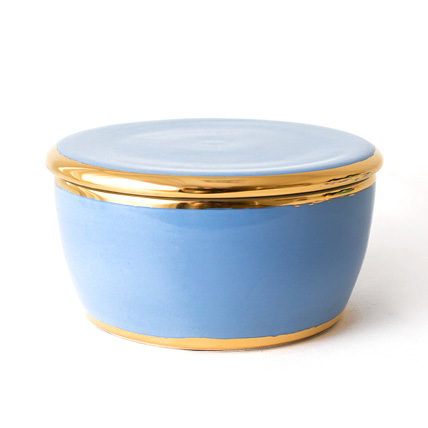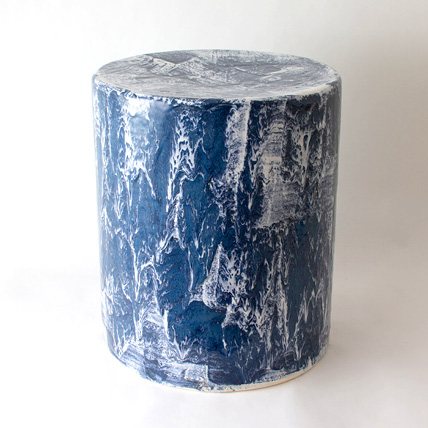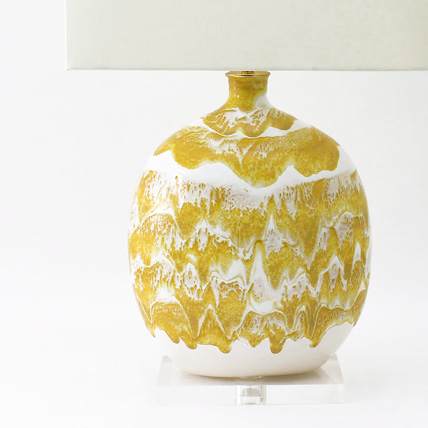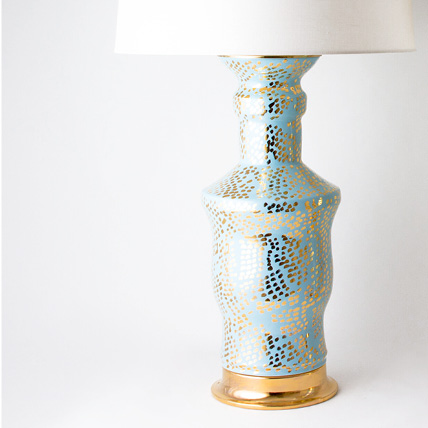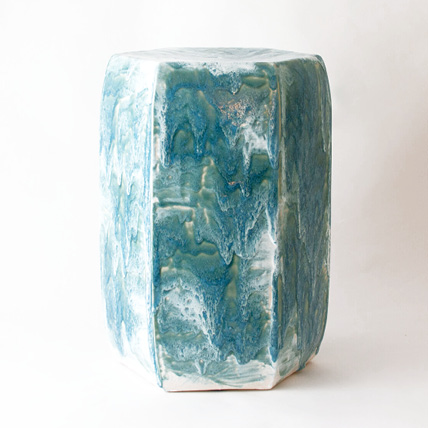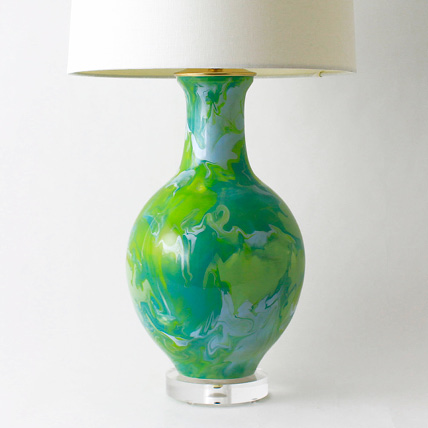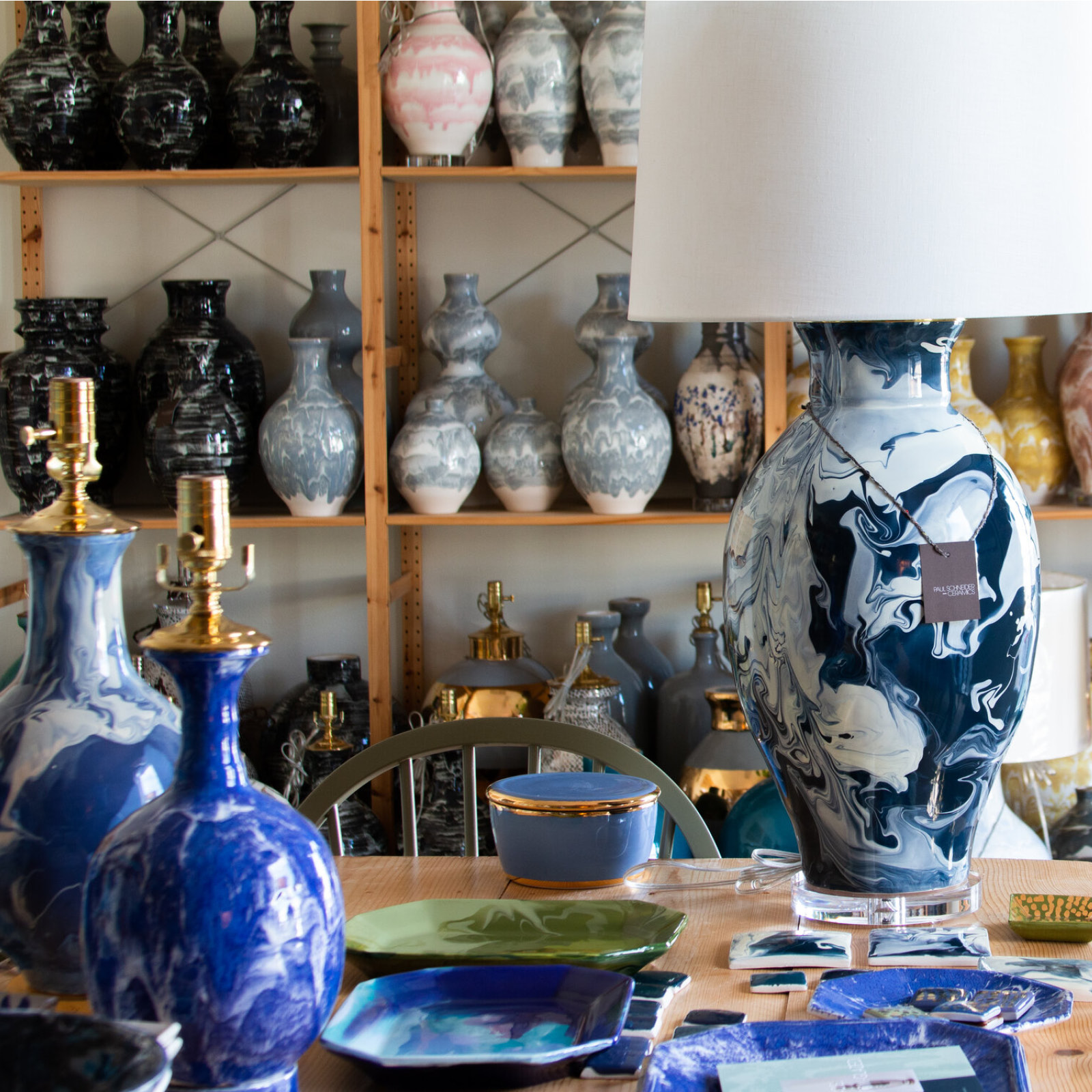
You never know where life and high school will take you. Such is the case for Dallas-based ceramicist, Paul Schneider. When confronted with the option of which fine arts class to take for credit fulfillment, Paul chose ceramics. He enjoyed it and spent free time throwing on the wheel (That’s when he wasn’t at baseball practice, which eventually led to an invitation to play on the team at Rhodes College in Memphis). After receiving some recognition for his work in juried shows, he took a course in Spain.
Now Paul’s lines of lamps, bowls, and trays are a hot accessory among designers. I’m attracted to the jewel-toned colors and interesting glazes that are sure to layer into the interiors that I create beautifully.
I sat down to chat with Paul to learn about his beginnings and where he sees the business going and growing.
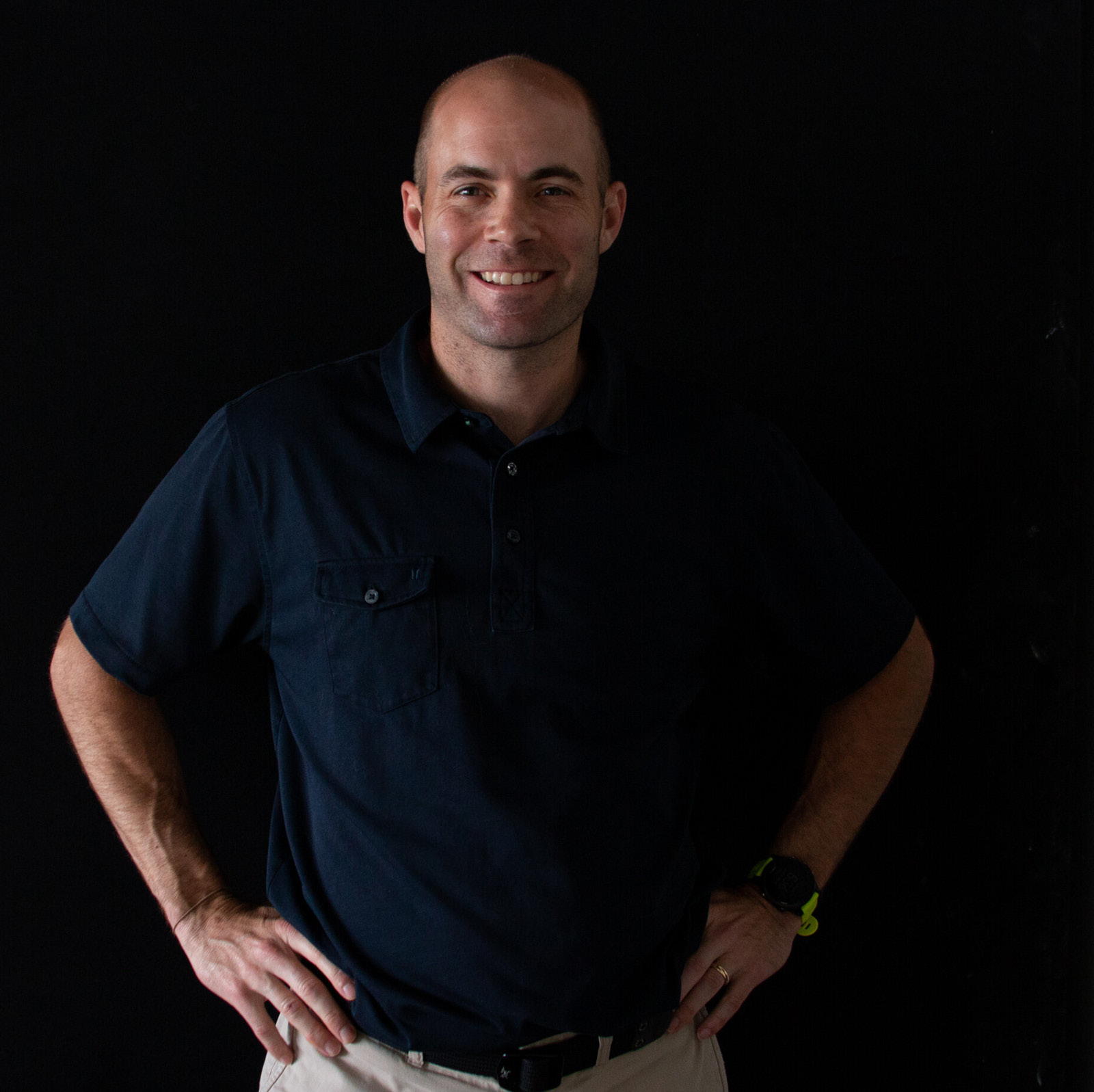
When did you realize that throwing ceramics was something that you could make a career of?
I started selling through 4510 in Dallas. It’s an emporium of luxury, artistry, and all things that are special. I started getting checks in the mail after people asked me to make things for them but was still fairly passive about it at that point. That retail relationship continued. George Michael even bought one of my works. I was making everything in my parents’ garage. And keep in mind, baseball had me during the day.
After college, I went to Jackson Hole for a year, and that was the only time that I was not engaged in ceramics. When I returned to Dallas at age 25, I thought that if I was going to pursue ceramics, I should do it right then. So there my journey began. I received an order from a group who needed a bunch of lamps for a private 747 jet. But the jackpot moment for me was when I signed up for my first trade show in New York. Architectural Digest saw my work and wrote a profile piece on me. It’s just gone up from there.

Lighting has become such an important component of the design story. It’s not only about the function of illumination, but also lends an opportunity for artistry and sculpture. How does that change the way you create, knowing that lighting can offer so much?
I always appreciate the opportunity to collaborate with clients based on a challenge. They will send swatches and want me to create an accent. I know that my piece is intended to be a special piece within their scheme. Some of the beauty of a commission is the faith that a client has in me. At 2300 degrees, I can control certain glazes and know how they will turn out. But others have a mind of their own at that temperature. People are really taking a leap of faith in my work.
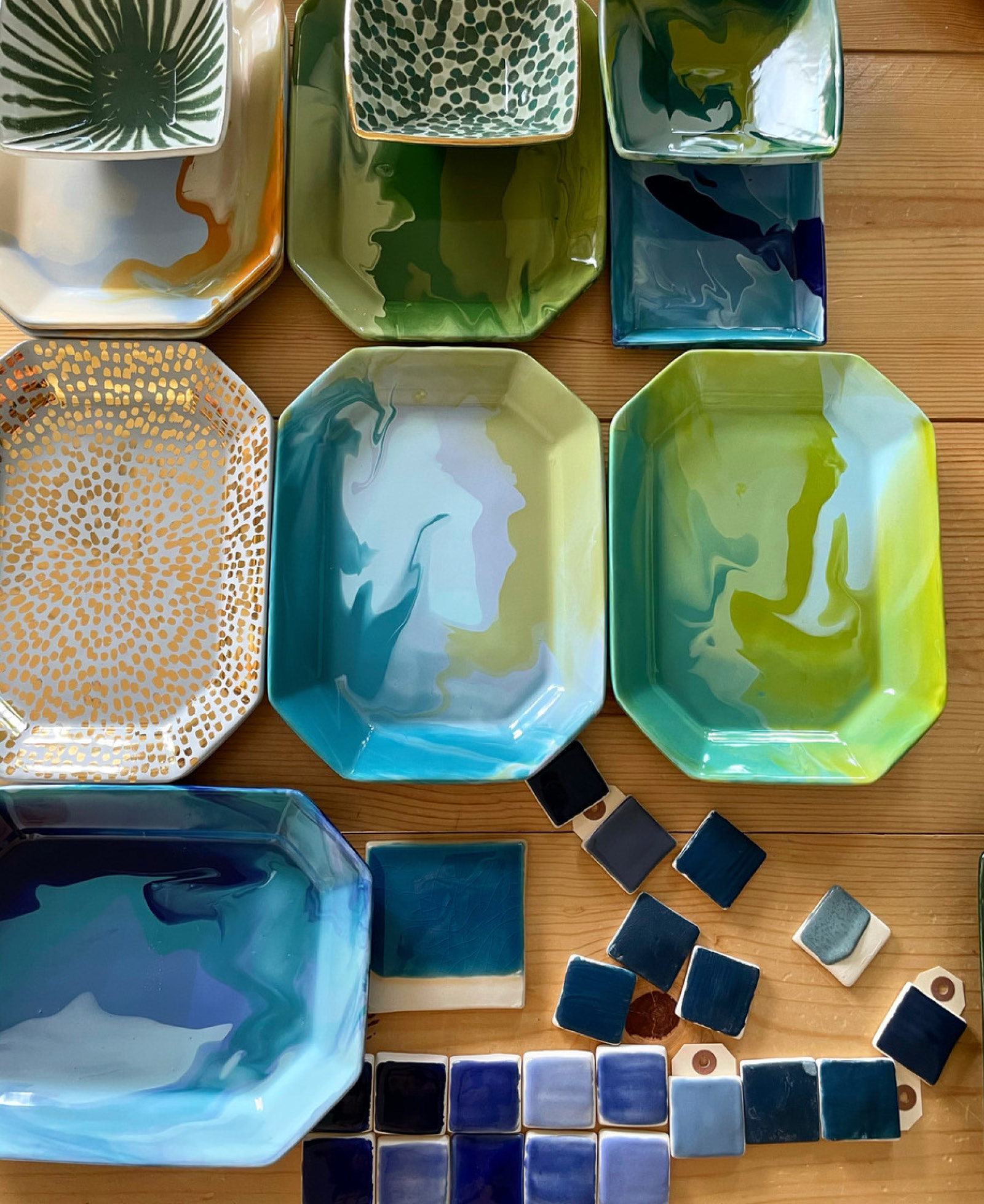
There’s such a focus now on pieces that are handmade. How does that effect your vision as you create knowing that there is an intimate relationship with the buyer versus something that they acquired through a catalog to fill a surface?
It’s an honor when people buy less but better. I have a mindset to maximize quality, and that comes from making something that is timeless. You could say that I first went down the fewer but better path in the late 90s when I first discovered the Patagonia catalog. I’ve tried to apply its business model to my own business. I dig into what I’m doing more deeply. I want to make something that will last with better quality and better craftsmanship. The founder’s book, Let My People Go Surfing really inspired me. They were small for such a long time. Small for 10 years making climbing gear before he found an idea with a rugby shirt. He asked himself why he wasn’t making his own clothing that was better. I’m always trying to follow that idea.

Let’s move to entertaining. Even though it’s not something that we can’t participate in right now, it will be as soon as everything opens up. Have you ever thought about tapping into the entertaining area?
I started with vases and bowls, and I still create those small pieces that allow my clients to have a piece of what I do at a reasonable price point. I’ve been blessed that these pieces are sought after, and it buys me time to experiment with new glazes. But I always go back to quality. I’m not a ceramic engineer. When you are talking about big volumes, and from a standpoint of staffing, creating tabletop becomes complicated. I’m not quite there yet. I tried to create chargers for my wedding in 2015, but I was using the wrong clay and they broke in the kiln. Producing in volume is a different ball game that relies on ceramic engineering. The bodies of the form have different characteristic when produced in volume.
What’s on the horizon for Paul Schneider ceramics?
Right now, there are a few smaller pieces such as lidded boxes and trays that I am working on. I’ve been messing around with garden stools but troubleshooting. When I put the garden stool on my website, 10 orders were placed right away. I’m trying to nail a hexagonal and cylindrical stool without the clay shrinking. I’m trying to figure out this shape before I offer other ones. It’s all trial and error, and that’s what keeps it interesting. I read and reach out to other ceramicists as much as I can. The community is helpful and always has suggestions about what to try.
The hurdle is the kiln. Our supplier has a few kilns where you can experiment. The takeaway is that the fun part of ceramics is trying and failing. Failure is not a bad word. Try to find a shop where they will allow you some sort of accessibility. From a design standpoint everything has been done in different civilizations. it’s neat and rewarding.




